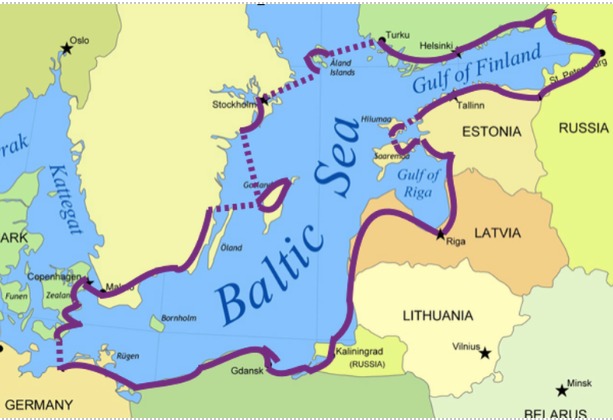PRELIMS BOOSTER
- Anti – Satellite Weapon:
What is an Anti-Satellite Weapon?
Russia is actively working towards a formidable new development in space technology, focusing on creating a nuclear anti-satellite (ASAT) weapon.
About Anti-Satellite Weapon:
- It is designed to debilitate or destroy satellites that are already in orbit and operational.
- Types of Anti-Satellite Weapons: ASATs are broadly classified into two types namely
- Kinetic energy methods: This involves launching a missile that intercepts and physically collides with the target satellite to destroy it. The kinetic energy ASATs physically collide with satellites and can reach altitudes. These ASATs can be ballistic missiles, drones, and other satellites.
- Non-kinetic methods: They use non-physical attacks such as cyber-attacks, jamming, and even lasers to blind satellites without physically destroying them.
- All of these attacks can be launched from the air, low orbit, or even ground installations.
- These can even undertake pellet cloud attacks on the enemy’s low-orbit satellites.
- Other ASAT capabilities include cyber-attacks on space systems, Electro-Magnetic Pulse (EMP) explosion devices, directed energy (laser-based) weapons and targeted missiles for the destruction of satellites to sabotage the enemy’s military operations.
- There are many countries which have this capability, but only four countries — including India — have demonstrated their ASAT capabilities.
- Issues:
- These weapons generate a tremendous amount of space debris, which poses a hazard to all space operations, including civilian and commercial satellites.
- India Stack :
- It is a set of Application Programming Interface (APIs) that allows governments, businesses, startups and developers to utilise a unique digital Infrastructure.
- India Stack consists of three layers of open APIs: identity, payments, and data.
- Although the name of this project bears the word India, the vision of India Stack is not limited to one country.
- It can be applied to any nation, be it a developed one or an emerging one.
- The four distinct technology layers provided are
- Presence less layer: Where a universal biometric digital identity allows people to participate in any service from anywhere in the country.
- Paperless layer: Where digital records move with an individual’s digital identity, eliminating the need for massive amounts of paper collection and storage.
- Cashless layer: Where a single interface to all the country’s bank accounts and wallets to democratise payments.
- Consent layer: This allows data to move freely and securely to democratise the market for data.
- Some of the APIs that are a central part of India Stack: are Aadhaar Proof, Aadhaar e-KYC, e-Sign, Digital Locker, and Unified Payment Interface.
- Magnetoelectric multiferroics
- These are a special class of materials popular among the research fraternity for their rarity and unique properties.
- These materials can exhibit both magnetism and ferroelectricity simultaneously.
- Application: For advanced technology applications like spintronics, electronic memory devices, and other electronic components like actuators and switches.
Places In News
- Baltic Sea
- It is a semi-enclosed inland sea located in Northern Europe.
- It is an arm of the North Atlantic Ocean, extending northward from the latitude of southern Denmark almost to the Arctic Circle and separating the Scandinavian Peninsula from the rest of continental Europe.
- It has a coastline of approximately 8,000 km, shared by several countries, including Sweden, Poland, Lithuania, Latvia, Finland, Estonia, Germany, Denmark, and Russia.
- It covers an area of approximately 377,000 sq.km. The sea is approximately 1,600 km long and 193 km wide.
- It is connected to the White Sea via the White Sea Canal and to the North Sea’s German Bight via the Kiel Canal.
- It connects to the Atlantic Ocean through the Danish Straits.
- The Baltic Sea contains three major gulfs: the Gulf of Bothnia to the north, the Gulf of Finland to the east, and the Gulf of Riga slightly to the south of that.
- It is often cited as the world’s largest brackish inland water body.
- Its water salinity levels are lower than that of the World Oceans due to the inflow of fresh water from the surrounding land and the sea’s shallowness.
- More than 250 rivers and streams empty their waters into the Baltic Sea. Neva is the largest river that drains into the Baltic Sea.
- Islands: It is home to over 20 islands and archipelagos. Gotland, located off the coast of Sweden, is the largest island in the Baltic Sea.

